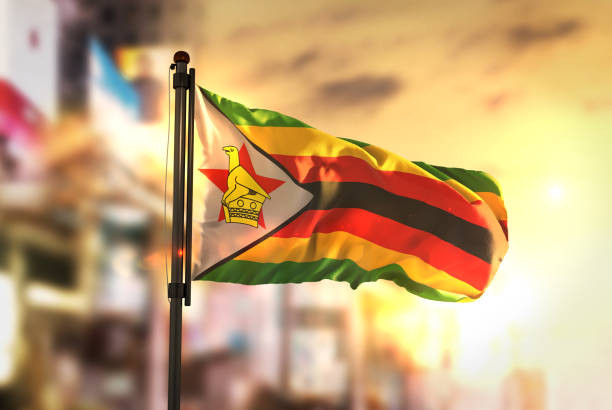
Let’s get things straight right from the start. The Mbudzi interchange road project is fast turning into a disaster.
The post-Mugabe administration of President Emmerson Mnangagwa is doing something that people will be talking about for a long time. That’s the energy it’s putting towards infrastructure development. Among a number of things, the establishment has been resurfacing, reconstructing and constructing roads across the country, for instance.
It’s not clear which sangoma advised Mnangagwa to concentrate on roads instead of hospitals, but you don’t quarrel with the fact that the roads have improved.
The Mbudzi project is one big project that the president apparently wants posterity—and the voters in 2023, of course—to remember him for. It’s bound to be one of the biggest projects implemented in Zimbabwe since independence in 1980, with an estimated value of around US$85m, never mind the inflated costs.
Here is what has happened so far. The government and project implementers have decided to close four stretches of roads that intersect at the Mbudzi roundabout just outside the capital, on the southern side. These are two parts of Simon Mazorodze as it morphs into the Masvingo highway, High Glen and New Chitungwiza.
Construction has already started on at least one of the numerous bridges that will be part of the interchange and some 135 commercial, industrial and residential sites have been designated for relocation and compensation. And the countless traders who were operating at Mbudzi have been forced out.
The interchange project is planned to be completed within one and a half years. One hopes things will happen according to plan, but you can’t completely avoid being pessimistic about the consummation of the project.
As it stands, the project has suffered some telling delays. It also doesn’t look direct owners of and lessees at the stands that fall in the way of the interchange will get compensation soon enough. Serious delays may lead to haggling and haggling may result in delays.
- Corruption watch: No-one is taking the Motlanthe report seriously
- Corruption watch: The scary return of Green Bombers
- Chinese threats on The Standard condemned
- News in depth: Gold mines poison Manicaland rivers with cyanide, invite Mozambique fury
Keep Reading
You know politicians, now. They hardly do things out of a sense of duty. For all you care, the interchange project could just be one of those election stunts. They do the nice optics and scheme they will fish the vote out of you. Once that is done, you won’t see them for the August dust.
Besides, Mnangagwa can lose next year’s election. If things happen that way, he can simply go away with the project. Add to that the sober probability that, just like the plethora of big projects in Zimbabwe, the interchange can suffer liquidity problems and get stalled.
Anyway, let’s just focus on what’s there on the ground, rather than bother with speculations, no matter how grounded they are. The main reason why the Mbudzi interchange project is quickly turning into a nightmare is that it was poorly planned. If you hadn’t heard about myopia, just look at what is happening in this short period that the roundabout has been closed to understand what that word means.
Granted, as it seems, there was a bit of impact assessment that was done. The problem is that the assessment was rigid, shortsighted and naïve. As it looks, the only impact projections were limited to the commercial and residential stands that would be affected by the project. To some extent, the evaluators also looked at what the closure of the four roads would mean for traffic.
But, clearly, that falls too far short. The project designers and implementers were fully aware of the fact that closing the four roads would affect the routes that motorists would use. That’s why they constructed the road that passes, from town, through Waterfalls all the way to the New Chitungwiza Road and the one that passes through Hopley, past the Boka tobacco floors and back into Masvingo Road.
But that was a half-baked effort. Because, you see, the traffic congestions that are happening on the new roads, is sickening. It’s even worse than what you were used to at the roundabout before. Both roads that have been opened up are too small to accommodate all the traffic. It’s jungle, literally, during peak hours.
But that was always coming. When the roads were closed and traffic redirected to the new roads, it seems to never have occurred to the project designers that the new routes would not be enough. Look here, all the traffic on Masvingo road has been rerouted onto the narrow new alleys. This traffic includes commercial trucks and all the mushikashika cars. It was going to be bad enough with only these! And who doesn’t know that, with all the ex-Jap cars crossing the border into Zimbabwe like bees, all the closed roads were already overwhelmed, particularly during the rush hour?
You will get the fits just imagining that the traffic jams will be with us for one and a half years, probably well beyond.
Then there is the problem of the long distance buses. Naturally, these coaches that ply the Beitbridge route and were already causing headaches at Mbudzi have relocated to the new roads. With time, they will increase in numbers. Together with the mushikashika cars and a swelling number of touts, they will clog the new roads and cause more congestion.
Similarly, the traders who were operating at the Mbudzi roundabout have relocated to the new roads. Apparently all of them and more. They are setting up wooden structures to start with and are already taking over the tarmac as they do their business. Again with time, they will increase in numbers and you know what that says.
Informal traders are a reality in Zimbabwe. It was always going to be naïve to just wish them away. So, plans must have been made to find them alternative places to operate from in a tidier way.
The Mbudzi interchange was adopted ostensibly to decongest the area. But there is more congestion now, and things are bound to get worse. All because of poor project planning.
- Tawanda Majoni is the national coordinator at Information for Development Trust (IDT) and writes in his personal capacity. He can be contacted on majonitt@gmail.com










